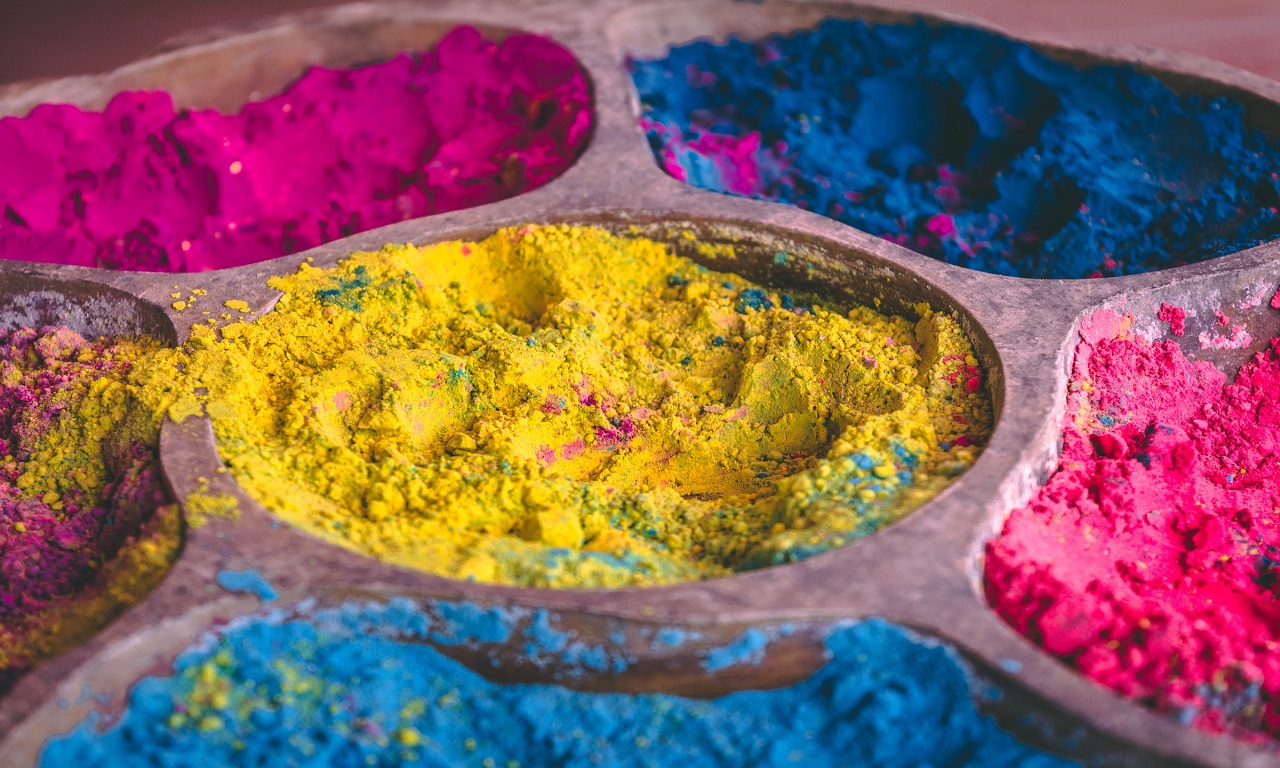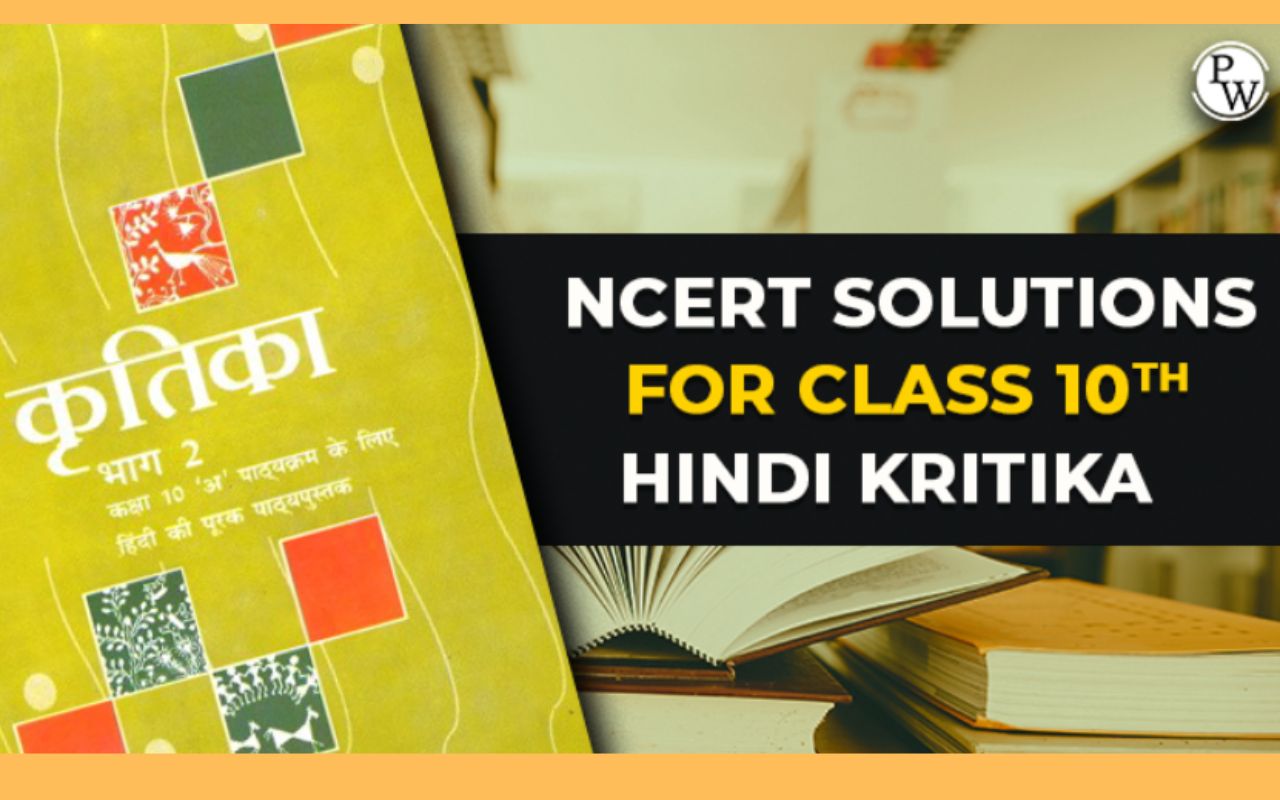
Holi Essay : Holi is a fun and colorful festival celebrated in India. It's a time when people play with colors, eat delicious sweets, and enjoy time with family and friends. We also remember a story from long ago when a good boy named Prahlad was saved from a bad demoness named Holika.
Before Holi, we light a big fire called "Holika Dahan" to show that good is stronger than bad. On the main day of Holi, we throw colorful powders and water balloons at each other. It's like a big paint fight, but everyone laughs and has a great time.
Paragraph on Essay on Holi in English
Holi, the Festival of Colors, is a vibrant celebration in India, marking the triumph of good over evil and the arrival of spring. Lasting two days, it begins with Holika Dahan, a bonfire night, and culminates in Rangwali Holi, a day of colourful revelry. The festival breaks down social barriers, fostering unity as people play with coloured powders and water. Holi promotes forgiveness and renewal, symbolised by the diverse colours representing the hues of life. Beyond India, Holi's popularity has spread globally, emphasising the universal message of joy and unity.

Class 7 Essay on Holi
Holi, also recognized as the Festival of Colors, stands out as a vibrant and joyful celebration in India, drawing participants of various ages and fostering a sense of community through a burst of colours and exuberance. This springtime festival holds a special significance, promoting unity, joy, and a spirit of togetherness. Holi's origins lie in Hindu mythology, featuring numerous legends. Among these, the tale of Prahlad and Holika is prominent, symbolising the triumph of good over evil. The ritual burning of the Holika pyre on the eve of Holi signifies the victory of virtue and the end of darkness. Spanning two days, Holi commences with Holika Dahan, where people gather to burn effigies of Holika, marking the defeat of malevolent forces. The second day, Rangwali Holi, witnesses vibrant celebrations with the playful use of dry and wet colours, water balloons, and water guns, transforming streets into a colourful spectacle. Colours hold a pivotal role in Holi, representing the diversity of nature, the onset of spring, and the festive spirit. Participants apply coloured powders, or "gulal," creating a lively atmosphere. The act of playing with colours also symbolises breaking down social barriers and promoting equality. Holi transcends religious and social boundaries, bringing together individuals from diverse backgrounds. Irrespective of age, gender, or social status, people unite to revel in the joy of Holi, fostering a sense of community and brotherhood. Amidst the festive fervour, it is crucial to adhere to safety measures. The use of eco-friendly and organic colours ensures an environmentally friendly celebration. Practising water conservation and respecting consent when applying colours contribute to a responsible and enjoyable Holi celebration. In summary, Holi extends beyond its religious and cultural origins, spreading joy to people of all backgrounds. The Festival of Colors imparts values of unity, love, and the triumph of good over evil. Amidst the vibrant colours, let us embrace Holi's underlying message of togetherness and harmony, transcending the lively celebration's colourful streets.Essay on Holi for Class 3
Holi, the Festival of Colors, is a joyous celebration in India during spring. It's a vibrant party where people play with colours, creating a lively atmosphere resembling a giant game of colourful tag. The essence of Holi lies in the hues that fill the air, turning everything into a lively rainbow. Laughter echoes, and smiles grace every face as people partake in this lively event. Beyond the colour play, Holi is enriched with fascinating stories. One recounts the victory of the virtuous Prahlad over the malevolent demon aunt Holika, aided by the god Vishnu. Holi, thus, signifies the triumph of goodness over adversity. Preparing for Holi involves cleaning and decorating homes, donning new attire, and acquiring special colours and water balloons for the impending revelry. It's a prelude to what promises to be the ultimate celebration. When Holi arrives, everyone gathers outside, engaging in spirited colour battles. Bright powders and water transform friends and family into living rainbows, while the joy is heightened by the sharing of delectable sweets and snacks. Holi fosters camaraderie and merriment, providing an opportunity to forge new friendships and revel in the company of old ones. It's a neighbourhood-wide playdate where disputes are set aside for the shared enjoyment of the festivities. Amidst the revelry, safety and kindness are paramount. The use of gentle, harmless colours is emphasised, and water play is reserved for those who welcome it. It's a reminder to play responsibly and respectfully. In conclusion, Holi is an enchanting time marked by colours, laughter, and companionship. It's a celebration of goodness and an occasion to revel with everyone around. So, let's drench ourselves in those vibrant colours, indulge in sweet treats, and create enduring memories during this splendid Festival of Colors!Essay on Holi in English 150 Words
Holi, the lively festival of colours, is enthusiastically celebrated throughout India with great joy. It symbolises the victory of good over evil and the advent of spring. The festivities kick off with a bonfire on the eve of Holi, representing the defeat of Holika, a demoness. The following day involves people engaging in playful activities with coloured powders and water, spreading joy and camaraderie. Holi transcends societal divides as individuals of various ages and backgrounds come together to revel in its festive spirit. The streets transform into a vibrant spectacle of colours, resonating with laughter and music. Traditional treats such as gujiya and thandai enhance the festive atmosphere. However, it is essential to partake in Holi responsibly, respecting the consent of others and utilising eco-friendly colours to safeguard the environment. Holi, with its spirited colours and cultural significance, promotes unity and reflects the diversity that characterises India. It serves as a time to cherish bonds of friendship and family while embracing the liveliness of life.Essay on Holi 100 Words
Holi, a vibrant festival in India, is a celebration of joy and friendship marking the arrival of spring. Bright coloured powders and water are used, spreading happiness. Holi unites people, breaking down differences and fostering togetherness. Families and friends relish the lively festivities, laughing and celebrating with enthusiasm. It's a moment when worries are forgotten, and love is shared through vibrant colours. Holi transcends being just a festival; it's a simple yet beautiful way to bring people closer and spread happiness.Essay on Holi 500 Words
Holi, a festive celebration in India, is renowned for its vibrant colours and lively ambiance. People of all ages gather to revel in the joyous occasion. This essay delves into the uncomplicated yet delightful facets of Holi, elucidating its universal significance. Holi stands out for its playful use of colours—powders and water turned into tools for a jubilant paint fight. These hues symbolise the vivacious spirit of spring, uniting individuals of various ages in a festive and inclusive environment. The festival carries an intriguing narrative featuring Prahlada, a virtuous character, and Holika, a malevolent one. The tale imparts the message of righteousness prevailing over malevolence, emphasising the importance of choosing the path of goodness. This narrative deepens the meaning behind Holi's festivities. Holi serves as an occasion for families and friends to unite, sharing laughter and exchanging sweets. Regardless of background, this festival fosters closeness, creating a day where everyone is equal, transcending differences in the spirit of joy and togetherness. Beyond the colour play, Holi involves diverse traditional customs. The day commences with prayers and offerings, followed by processions and familial gatherings. Traditional dances and music contribute to the festive ambiance, blending merriment with cultural richness. Holi also doubles as a culinary feast, with families preparing special sweets and snacks. Scents of delicacies like gujiyas and puran poli permeate the air, offering a gustatory delight. Sharing these delectable treats with loved ones adds a special touch to the celebration. In contemporary times, environmental awareness prompts some to opt for natural and eco-friendly colours during Holi, showcasing a commitment to nature. This evolution highlights how celebrations can adapt and become more sustainable, making Holi a joyous and eco-friendly affair. Holi, a day of vibrant colours, joy, and unity, is a celebration accessible to all. It encompasses laughter, delectable cuisine, and the warmth of familial and friendly bonds. As the colours settle, Holi leaves behind a lingering sense of happiness and unity, reminding us of life's simple yet profound joys.Essay on Holi for Class 6
Holi, the Festival of Colors, is a joyful celebration in India, marking the arrival of spring. It's more than just colour splashing; it symbolises good triumphing over evil. Exploring Holi's meaning and traditions can be exciting for a sixth-grader. Holi has deep historical roots in Hindu mythology, like the stories of Prahlad and Holika. Prahlad's devotion and Holika's burning represent the victory of good over evil. Understanding these stories adds richness to the festival. During Holi, people unite, setting aside differences to celebrate joy and unity. It starts with Holika Dahan, a bonfire symbolising God's triumph. The next day is full of fun with coloured powders, water balloons, and playful banter. Colours in Holi have meanings - red for purity, green for vitality, blue for calmness, breaking social barriers, and spreading happiness. Exploring these meanings adds cultural understanding. Holi brings communities together, promoting togetherness, forgetting differences, fostering harmony, and unity. It teaches us to spread love and joy in our communities. Celebrating Holi responsibly is crucial. Use natural colours for safety and minimal environmental impact. Save water, a precious resource, during celebrations. In conclusion, Holi is not just about colours; it celebrates life, love, and unity. Learning about its history, rituals, and symbolism can deepen a sixth-grader's appreciation for this vibrant festival. When playing with colours, remember the stories behind them and cherish the togetherness that makes Holi special.Essay on Holi for Class 4
Holi is a vibrant and joyous festival celebrated in India, marking the arrival of spring and the triumph of good over evil. This colourful festival is especially loved by children, who eagerly await the day to indulge in the playful and spirited atmosphere. For a class 4 student like you, Holi is not just about colours; it's about fun, friendship, and cultural significance. The festival usually falls in March, and its preparations start well in advance. People clean their houses, buy new clothes, and make delicious sweets to share with friends and family. The excitement builds as the day approaches, and on the day of Holi, the air is filled with laughter and the smell of festive foods. The most exciting part of Holi for children is, undoubtedly, the playing with colours. Bright powders and water balloons of all hues transform the surroundings into a kaleidoscope of colours. Friends and family chase each other, smearing each other's faces with colour and sharing hearty laughs. It's a day when everyone is equal, covered in colours that erase differences and promote a sense of unity. One of the traditional aspects of Holi is the lighting of a bonfire the night before, known as Holika Dahan. This ritual symbolises the victory of good over evil, commemorating the tale of Prahlad and Holika from Hindu mythology. Families gather around the bonfire, sing songs, and pray for the well-being of their loved ones. Apart from the sheer joy of playing with colours, Holi also brings people together. It is a time to forget differences, forgive past grievances, and renew relationships. The saying "Bura Na Mano Holi Hai" (Don't mind, it's Holi) captures the essence of the festival, encouraging a spirit of forgiveness and camaraderie. However, amidst all the fun, it's essential to play Holi responsibly. Using safe, eco-friendly colours ensures that the celebration doesn't harm the environment or anyone's health. It's also crucial to respect the personal space and consent of others, ensuring that the festivities remain enjoyable for everyone. In conclusion, Holi is much more than just a festival of colours. It's a celebration of life, love, and the triumph of good over evil. As a class 4 student, cherish these moments of joy and friendship, and remember the cultural and spiritual significance that makes Holi a truly special occasion.Holi Essay in Hindi
Below we are providing a Holi Essay in Hindi for Students. it will help you to enhance your knowledge and also help in school essay writing competition.
होली, रंगों का त्योहार, भारत में मनाए जाने वाले सबसे रंगीन और खुशियों भरे त्योहारों में से एक है। यह आमतौर पर मार्च महीने में आता है और बसंत के आगमन का संकेत देता है। यह त्योहार सिर्फ रंगों के साथ खेलने के बारे में ही नहीं है, बल्कि यह अच्छाई की जीत और एकता की भावना के बारे में भी है।
होली की कथा हिन्दू पौराणिक कथाओं में निहित है, खासकर होलिका और प्रहलाद की कहानी में। होलिका, दानवी राक्षस, ने प्रहलाद को भगवान विष्णु के भक्त को आग में जलाने की कोशिश की। हालांकि, भगवान विष्णु ने प्रहलाद की रक्षा की, और होलिका को आग में नष्ट कर दिया। इस घटना का संकेत अच्छाई की जीत की ओर है, और होली की रात को "होलिका दहन" के नाम से जाने वाले एक बोनफायर को इस जीत का प्रतीक बनाने के लिए जलाया जाता है।
स्वादिष्ट मिठाई और नमकीन होली के उत्सव का महत्वपूर्ण हिस्सा होते हैं। इस त्योहार के दौरान गुजियाएं, आटे से बनी जिनमें मिठाई भराई होती है, एक प्रसिद्ध मिठाई होती हैं। ठंडाई, दूध, द्रव्यों, और मसालों से बनी एक पारंपरिक पेय, कई लोगों द्वारा आनंदिति से ली जाती है। लोग इन मिठाईओं को अपने दोस्तों और पड़ोसियों के साथ आपसी सौहार्द के रूप में विनम्रता के भावना के साथ विनिमय करते हैं।
होली सिर्फ रंगों के साथ खेलने के बारे में ही नहीं है, यह प्यार और खुशियों को फैलाने के बारे में भी है। दोस्त और परिवार सभी एक साथ आकर्षित होते हैं, और क्षमा त्योहार का महत्वपूर्ण तत्व है। लोग आपसी गलतियों के लिए एक-दूसरे से क्षमा मांगते हैं और प्यार और मित्रता के नए बंधनों के साथ फिर से आरंभ करते हैं।
मनोरंजन और उत्सवों के अलावा, होली का सांस्कृतिक और धार्मिक महत्व भी होता है। यह वक्त होता है जब लोग मंदिरों की यात्रा करते हैं और अपने जीवन के एक समृद्ध और समान्य जीवन के लिए आशीर्वाद प्राप्त करने की प्रार्थना करते हैं। कुछ भारत के क्षेत्रों में, होली को पारंपरिक लोक नृत्य और संगीत के साथ मनाया जाता है, जो इस त्योहार की सांस्कृतिक धरोहर को बढ़ावा देता है।
हाल के वर्षों में, होली भारत की सीमाओं के पार भी पॉपुलैर हो गई है और इसे विभिन्न राष्ट्रीयताओं और संस्कृतियों के लोग दुनिया भर में मनाते हैं। यह भारत की संगीती सांस्कृतिक धरोहर और विविधता में एकता की भावना का प्रतीक बन गया है।
होली एक त्योहार है जो लोगों को एक साथ लाकर अच्छाई की जीत और बसंत के आगमन को रंगों, मिठाईयों, और संगीत के साथ मनाने के लिए बुलाता है। यह वक्त है कि विभिन्नताओं को भूल जाए, क्षमा की जाए, और प्यार और मित्रता के बंधनों को पुनः नवीनतम बनाने का। होली का महत्व इसकी खेलने की प्राकृतिक नईरूप में होने के परे जाता है, क्योंकि यह हमारे जीवन में अच्छाई की महत्वपूर्ण होने का भी एक स्मरण है।
|
Also Check |
|
| Birds Names | Animals Name |
| Colours Name | Forest essay |
Holi Essay FAQs
What is Holi?
When is Holi celebrated?
What is the significance of Holi?
How is Holi celebrated?
What are some traditional Holi sweets?










